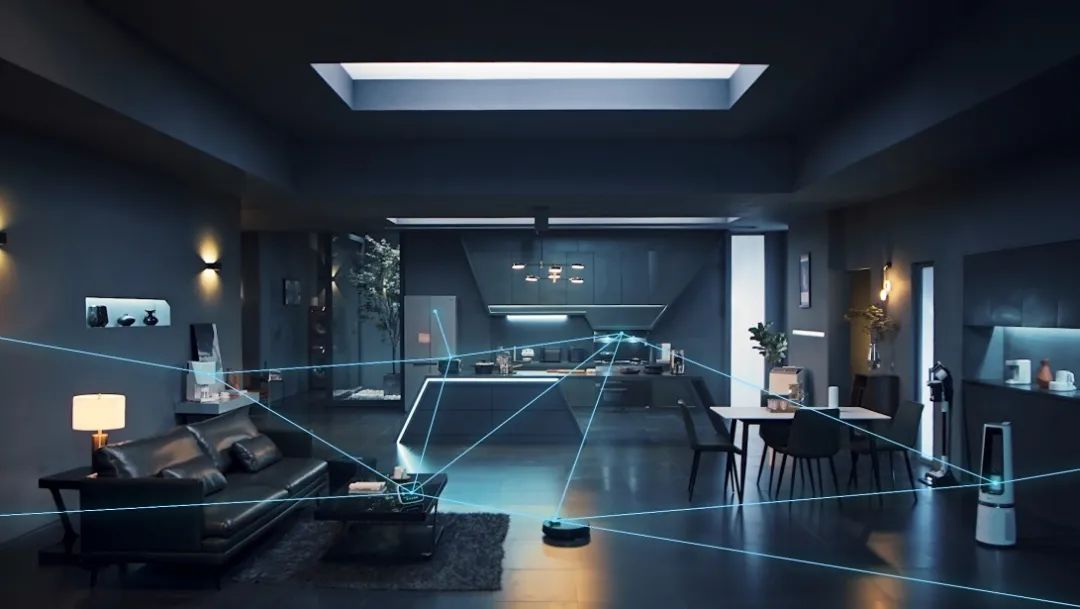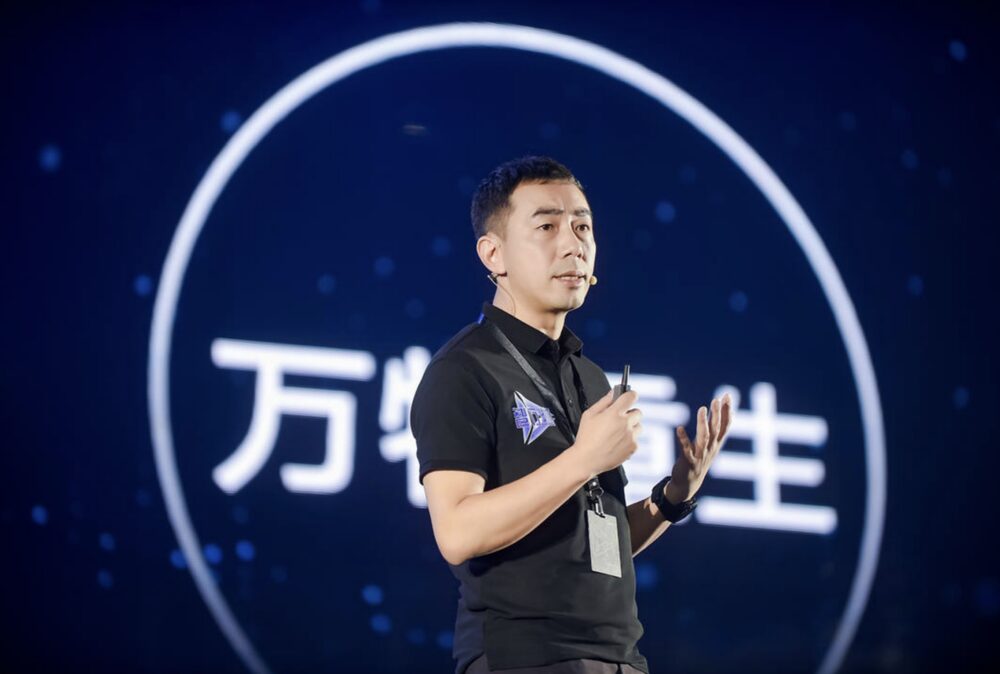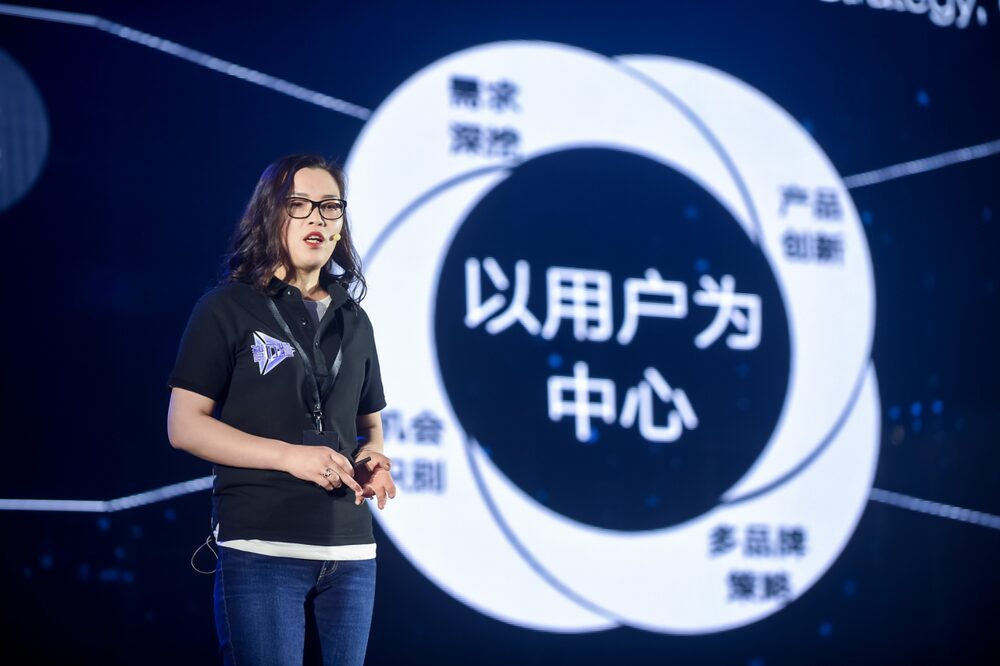
In 2013, the Computer History Museum in California uploaded a rare video to YouTube that was shot in 1980. That year, Apple Inc. went public, catapulting Steve Jobs onto the Forbes billionaire list.
In this 24-minute video, Jobs, with long hair, spoke eloquently. His insightful discussion about the relationship between software and hardware is regarded as a groundbreaking technological prophecy.
Jobs said:
The integration of software and hardware is becoming more profound; yesterday’s software is today’s hardware… One of the things we need to do in the future is to explore the fusion of different fields and find the intersection of both.
At that time, Windows had not yet been released, and it would be nearly 30 years before the first iPhone was born, but Jobs had already foreseen that the integration of software and hardware would be the primary form of future technological products.
Today, 5G, AI, and many new technologies have ignited the Internet of Things (IoT), making smart homes the next trillion-dollar market after new energy vehicles, seemingly validating Jobs’ foresight.
Since its debut in the 1980s, more and more smart devices have entered homes, with technology evolving rapidly and functionalities innovating endlessly, yet the underlying logic of product innovation has never changed.
Good products are never about selling concepts or technologies, but about bringing users the most refreshing lifestyle.
Therefore, product development is an obvious science, while research is an abstract art.
Jobs never looked at market research reports, as Ford famously said when mass-producing the Model T, if you ask users what they want, they will tell you they want a faster horse.
Today, everything about smart homes is new, but more crucial than technology is how to provide an experience that exceeds expectations, and a recent launch event seems to have provided the answer.
At this event, home appliance giant Midea unveiled over fifty new products across multiple sub-brands. From technology to functionality, from scenarios to experiences, a complete smart home ecosystem is emerging.
Last year, Midea established the “Smart Home Business Group,” and the strategy of “Technological Leadership, Direct User Engagement, Data-Driven, Global Breakthrough” began to take full effect. This intensive release of new products captures all imaginable and unimaginable scenarios, serving as a vivid representation of the concept that “everything has intelligence.”
For a technology giant like Midea, which has invested nearly 40 billion yuan in R&D over five years, releasing dozens of new products at once is not difficult. The challenge lies in ensuring that all new products resonate across different consumer segments and can appeal to the most discerning customers.
This time, Midea has accurately pinpointed the user trends in the smart home industry for the next decade and the evolutionary direction of “things” within the IoT ecosystem.

The essence of technology is not to show off skills, but to enhance visible life efficiency. If you are a lazy homebody who prefers to talk rather than act, the Quick series of eight products will seamlessly fit your needs. In addition to a modular integrated cooking center and a multifunctional air manager for all seasons, there are highly automated rice cookers and hands-free blenders, as well as a smart kitchen hub that could redefine the layout of future Chinese homes, perfectly illustrating the idea that “AI gives you freedom, freeing your hands for what you love.”
If you are a hardcore tech enthusiast, products like the oscillating fan, visual air fryer, microcrystalline refrigerator, and indeed cool air conditioners will surely pique your interest, satisfying your zeal for new materials and technologies, including the enzyme-breaking blender, a culinary black technology.
For those who appreciate aesthetics, there are beautiful coffee machines and milk tea makers, visually pleasing and functional, while for those seeking relaxation, there are tea makers that soothe the mind and body. As for IP fans, from anime to national trends, from street style to cute aesthetics, there’s no fear of being overwhelmed by choices.
By collecting all new products at once, you can likely enjoy the future of smart homes in advance.
This launch event also marks a watershed moment for the industry.
For the past decade, smart home technology has been running in two parallel worlds that never intersect. Internet companies have been trying to leverage traffic to pull ecosystems, positioning themselves in the spotlight while others play supporting roles.
Midea, on the other hand, has a 53-year legacy in manufacturing, deeply ingrained in its DNA, and has maintained its focus on “things” amid the industrial wave of IoT.
This forms two pillars of Midea’s values:
1. Cover scenarios with products, and drive experiences with scenarios; this is the correct evolutionary path for the Internet of Things;
2. The core of whole-home intelligence is cloud-based information interaction and sharing, thus ecosystem openness is a prerequisite;
However, implementing this understanding at the product level requires a commitment to exploration.
In the past, home appliances were defined by channels, and large-scale low-cost manufacturing was the greatest advantage. Today, the market is highly fragmented, with various interest circles rapidly emerging, beginning to dictate the consumption decisions of young people.
The business model has changed, but the underlying logic remains the same.

Fu Wei, President of Midea’s Home Appliances Division
“Delivering the best to users while keeping the toughest challenges to ourselves is always the right approach,” says Fu Wei, President of Midea’s Home Appliances Division. Hence, his requirements for the product team are simple—reverse thinking, self-denial, and maintaining a trial-and-error approach to create products that consumers haven’t even thought of.
The first step is to encourage research and development personnel to get accustomed to self-questioning.
Currently, it’s popular to have scenarios before products, but how do you define user needs within those scenarios? Previous research perspectives often led to preconceived notions, and self-questioning followed templates, such as what kind of rice cooker users need. Fu Wei hopes to change this to a different question: how do young people cook today?
Data shows that 17.1% of Chinese kitchens are less than 4 square meters, and 33.4% range from 4 to 6 square meters. In such limited spaces, where do users’ needs and pleasures lie when managing three meals a day?

This question gave birth to the Quick series, which Midea describes as its first cooking “toy” in 53 years—the QuickMore integrated cooking center. The entire unit features a modular design, allowing for interchangeable tops or bodies to switch between four forms: induction cooker, boiling pot, pressure cooker, and air fryer. Moreover, it can connect through IoT to download new functions and recipes from the Midea Home app, customizing exclusive features for the unit. In the future, it can also be equipped with an integrated stirring lid to transform into a smart stir-fry machine or paired with a transparent glass pot for visual cooking, expanding the machine’s functionalities.
The second step is shifting from an engineer’s mindset to a user-oriented approach.
In May 2017, Midea established its first user experience innovation laboratory in Shanghai, aimed at studying consumer lifestyles, product trends, and user needs, marking a significant shift in Midea’s engineering mindset.
Beyond the group-level research, Midea has also strengthened relatively independent research and innovation experience departments at the divisional level, unifying user experience standards and embedding key user experience nodes throughout the product development process.
At this launch event, Midea’s Brand and User Strategy Center (CBS) also made its first public appearance, releasing insights into seven major user trends in the smart home industry, interpreted in the context of the macro market environment. Their mission is to create disruptive experiences to the greatest extent possible based on the technical refinements of the engineering mindset.
This isn’t a case of building in isolation; rather, it’s based on the accumulation and insights from 90 million users, 12 million social interactions, and 5 million e-commerce data points, allowing Midea to dig deep into needs from the dimensions of demographics, scenarios, and technology.

Fu Xin, Head of User and Brand Strategy at Midea
On this innovative path, Midea has successfully avoided the pitfalls of innovation that disconnects from genuine needs and artificially creates pain points. Instead, it seeks disruptive experiences triggered by real-life scenarios.
For instance, the product team observed a typical summer evening home scenario—most people experience the situation of falling asleep with the air conditioning on, enjoying the cool comfort, but as metabolism slows in the later hours, the sensation of cold increases. Typically, users can only choose sleep mode or set a timer to turn off the air conditioning. However, Midea has offered the best solution through experiential breakthroughs.
The air conditioning and fan work in tandem, with both devices automatically switching based on temperature changes. In the initial hours, the air conditioning cools, while the fan circulates air in the later hours, maintaining optimal comfort. This program allows users to preset their preferences in the Midea Home app, and in the future, it can autonomously learn based on the user’s habits.
The third step is how products evolve into ecosystems.
The imagination of smart homes comes from the information interaction across devices and scenarios, but who leads this has always been a contentious issue. Lei Jun stated that the IoT in the 5G era is a super internet, emphasizing the experience premium brought by soft capabilities. In contrast, Midea, drawing from data from over a hundred million users, extracts different pathways with confidence, adhering to a user-driven approach of “interconnected things.”
For Midea, which has achieved full-category smart product integration and cross-scenario intelligent interactivity, the industry’s floor and ceiling are already visible.
The floor can be understood as the synergy of smart products + scenarios + experiences. Generally speaking, there are 21 major categories of home appliances, and this number continues to expand, with small appliances being the most numerous and fastest-growing. Data from CBNDATA indicates that there are over 200 categories of small appliances in Europe and America, with an average of 30-40 items per household.
Currently, competition primarily involves filling scenarios with products, while a truly holistic smart home experience is a process of qualitative change from quantity. Midea’s release of over fifty products at this event reflects this understanding.
The ceiling can be understood as the capability of the ecosystem to extend in both directions.
According to Tianyancha, last year, Chinese home appliance companies added 350,000 patents, reaching an 11-year high. In terms of actual invention patent grants, Midea ranks 8th among all Chinese companies, indicating its strong R&D capabilities.
However, Midea has not built barriers around itself; instead, it has maintained an open mindset. This includes fully open technologies such as Midea Cloud, the Midea Home app, AI voice assistant, and smart modules centered around the HolaCon chip.
In 2019, Midea joined the Huawei HiLink ecosystem, and in September of last year, Huawei officially launched HarmonyOS 2.0, with Midea being one of the first home appliance companies to integrate into it. For Midea, the ecosystem is not a barrier but a means to enhance user experience.
The significance of the April 12 launch event lies not in dazzling users, but in signaling that Midea has taken another solid step in its comprehensive digitalization and intelligence strategy. While others are busy flexing their muscles, telling stories, and indulging in superficial superiority, Midea is quietly building a smart ecosystem deeply rooted in real scenarios. The next frontier of IoT will be “self-intelligent” with a focus on things, as the internet infrastructure is already well-established. Smart technology is no longer just about pure technical prowess or superficial enhancements in product functionalities. Compared to participants in the internet sector, Midea’s increasingly lean supply chain and its hardware R&D advantages, which require extensive time accumulation, will unleash even greater momentum and endurance.
Outstanding companies have their own DNA. Steve Jobs once said that Apple makes hardware to better create software. It has been proven that the companies truly capable of redefining industries are those like Apple and Tesla, which blur the lines between hardware and software. With 53 years of hardware experience, Midea is certainly eager to redefine its future.
Perhaps one day, the new products we see at launch events will evolve to an unbelievable extent, as the science fiction master Arthur C. Clarke said:
“To define the limits of the possible, the only way is to cross it into the impossible.”
After all, the boundless imagination is what makes the future worth looking forward to.
Special Planning